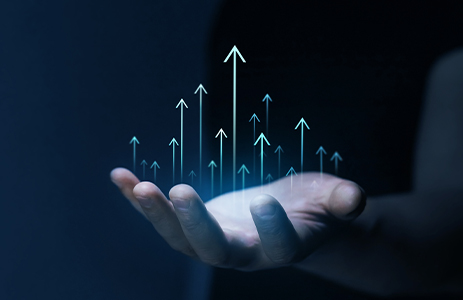

Low-code tools are going mainstream
Purus suspendisse a ornare non erat pellentesque arcu mi arcu eget tortor eu praesent curabitur porttitor ultrices sit sit amet purus urna enim eget. Habitant massa lectus tristique dictum lacus in bibendum. Velit ut viverra feugiat dui eu nisl sit massa viverra sed vitae nec sed. Nunc ornare consequat massa sagittis pellentesque tincidunt vel lacus integer risu.
- Vitae et erat tincidunt sed orci eget egestas facilisis amet ornare
- Sollicitudin integer velit aliquet viverra urna orci semper velit dolor sit amet
- Vitae quis ut luctus lobortis urna adipiscing bibendum
- Vitae quis ut luctus lobortis urna adipiscing bibendum
Multilingual NLP will grow
Mauris posuere arcu lectus congue. Sed eget semper mollis felis ante. Congue risus vulputate nunc porttitor dignissim cursus viverra quis. Condimentum nisl ut sed diam lacus sed. Cursus hac massa amet cursus diam. Consequat sodales non nulla ac id bibendum eu justo condimentum. Arcu elementum non suscipit amet vitae. Consectetur penatibus diam enim eget arcu et ut a congue arcu.

Combining supervised and unsupervised machine learning methods
Vitae vitae sollicitudin diam sed. Aliquam tellus libero a velit quam ut suscipit. Vitae adipiscing amet faucibus nec in ut. Tortor nulla aliquam commodo sit ultricies a nunc ultrices consectetur. Nibh magna arcu blandit quisque. In lorem sit turpis interdum facilisi.
- Dolor duis lorem enim eu turpis potenti nulla laoreet volutpat semper sed.
- Lorem a eget blandit ac neque amet amet non dapibus pulvinar.
- Pellentesque non integer ac id imperdiet blandit sit bibendum.
- Sit leo lorem elementum vitae faucibus quam feugiat hendrerit lectus.
Automating customer service: Tagging tickets and new era of chatbots
Vitae vitae sollicitudin diam sed. Aliquam tellus libero a velit quam ut suscipit. Vitae adipiscing amet faucibus nec in ut. Tortor nulla aliquam commodo sit ultricies a nunc ultrices consectetur. Nibh magna arcu blandit quisque. In lorem sit turpis interdum facilisi.
“Nisi consectetur velit bibendum a convallis arcu morbi lectus aecenas ultrices massa vel ut ultricies lectus elit arcu non id mattis libero amet mattis congue ipsum nibh odio in lacinia non”
Detecting fake news and cyber-bullying
Nunc ut facilisi volutpat neque est diam id sem erat aliquam elementum dolor tortor commodo et massa dictumst egestas tempor duis eget odio eu egestas nec amet suscipit posuere fames ded tortor ac ut fermentum odio ut amet urna posuere ligula volutpat cursus enim libero libero pretium faucibus nunc arcu mauris sed scelerisque cursus felis arcu sed aenean pharetra vitae suspendisse ac.
In today’s competitive hospitality landscape, understanding your guests isn’t just a luxury—it’s a necessity. With the rise of digital touchpoints and evolving guest expectations, hotels and resorts must go beyond traditional data collection and embrace Guest Behavior Analytics powered by a hospitality-specific Customer Data Platform (CDP).
What Is Guest Behavior Analytics?
Guest Behavior Analytics refers to the process of collecting, analyzing, and interpreting data on how guests interact with your brand—before, during, and after their stay. This includes booking patterns, amenity usage, dining preferences, feedback, and even social media engagement.
A hospitality-specific CDP takes this a step further by centralizing guest data across systems—PMS, POS, CRM, booking engines, and loyalty platforms—into a single, unified profile. This enables hoteliers to uncover actionable insights that drive personalization, operational efficiency, and revenue growth.
From Data to Decisions: How a Hospitality CDP Makes It Happen
Here’s how a purpose-built CDP transforms raw guest behavior data into strategic action:
1. Unified Guest Profiles
By stitching together fragmented data sources, the CDP creates a 360-degree view of each guest. You’ll know not just who they are, but what they like, how they book, and what drives their loyalty.
Example: A frequent business traveler who books last-minute and prefers room service can be automatically offered express check-in and dining credits.
2. Segmentation & Personalization
Behavioral data allows for dynamic segmentation—grouping guests by preferences, booking behavior, or lifetime value. Marketing teams can then tailor campaigns that resonate deeply.
Example: Guests who frequently use the spa can be targeted with wellness packages and exclusive offers during off-peak seasons.
3. Predictive Insights
Using machine learning, the CDP can forecast future behavior—like likelihood to churn, upsell potential, or preferred booking channels.
Example: Predictive models can identify which guests are likely to book a suite upgrade, enabling targeted promotions that boost ancillary revenue.
4. Real-Time Engagement
With real-time data flows, hotels can respond instantly to guest actions. Whether it’s a mid-stay upsell or a post-stay review request, timing is everything.
Example: If a guest orders room service twice in one stay, the CDP can trigger a personalized thank-you message with a discount on their next visit.
5. Operational Optimization
Behavior analytics aren’t just for marketing—they inform staffing, inventory, and service delivery.
Example: If data shows a spike in gym usage on weekday mornings, management can adjust staffing and amenities accordingly.
Turning Insights into Action: A Strategic Imperative
The true power of Guest Behavior Analytics lies in its ability to drive measurable outcomes:
- Increased guest satisfaction through personalized experiences
- Higher conversion rates from targeted campaigns
- Improved loyalty via relevant rewards and recognition
- Operational savings through smarter resource allocation
Final Thoughts
In an era where guest expectations are shaped by tech-savvy brands and instant gratification, hospitality businesses must rise to the challenge. A hospitality-specific CDP doesn’t just collect data—it activates it, turning insights into action that delights guests and drives growth.
Whether you're a boutique hotel or a global chain, the journey to smarter guest engagement starts with understanding behavior—and acting on it.



